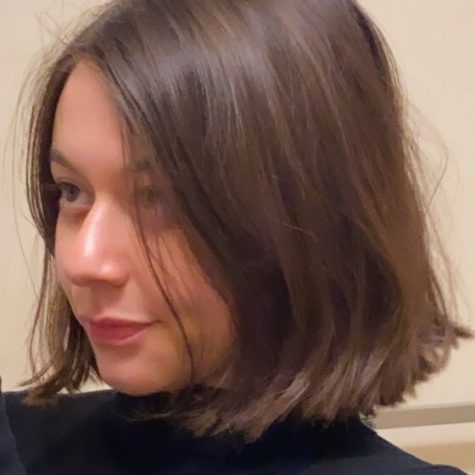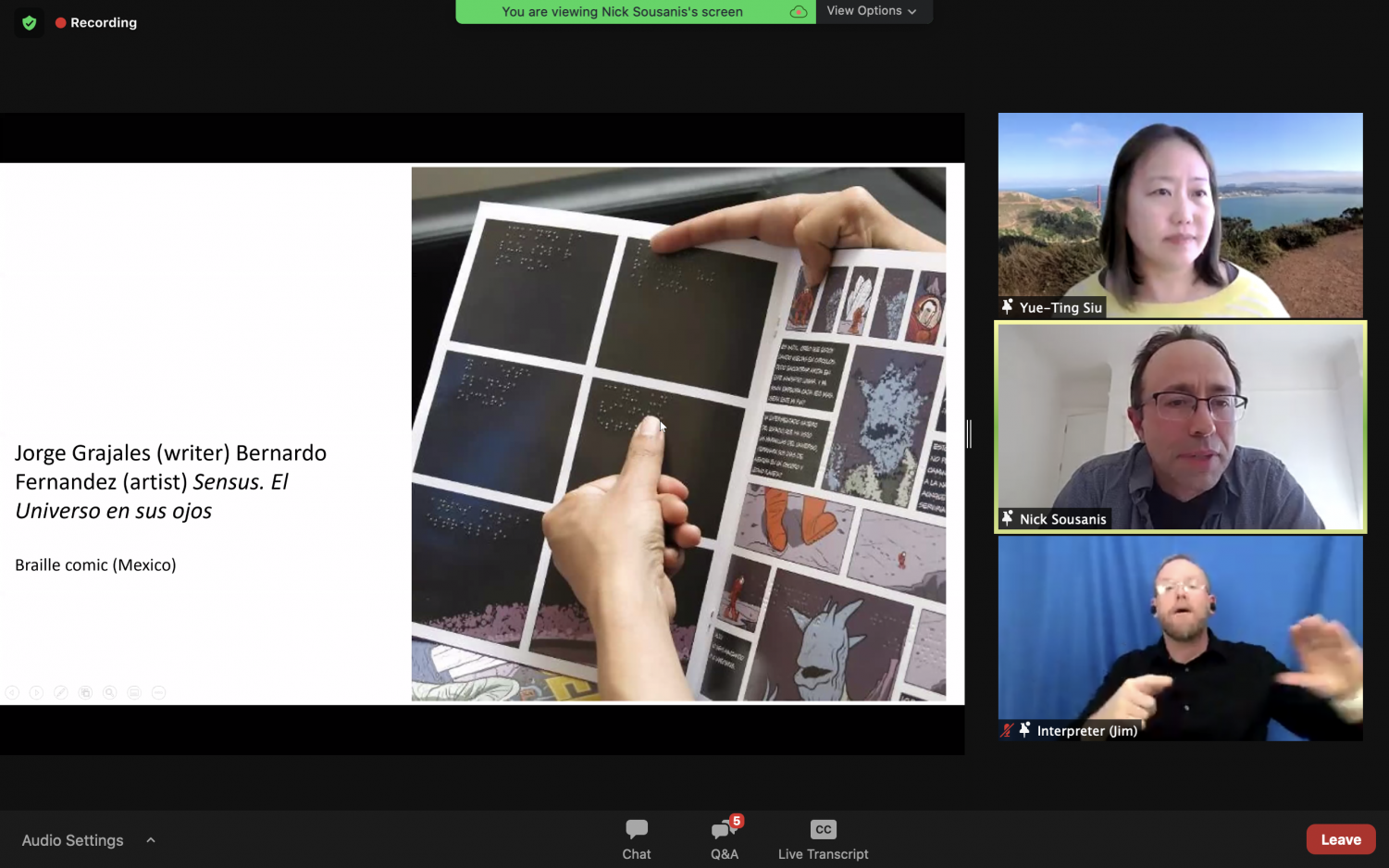
Comics roundtable on blindness sparks conversation among hundreds of attendees
March 24, 2021
Comic books are an extremely visual media, universally known for bright colors, small characters and even smaller texts. By nature, it leaves out a certain audience, for the most part, almost completely excluded: those with visual impairment.
On Wednesday, a roundtable discussion was hosted by SF State’s Program in Visual Impairment, Comic Studies Department and The Longmore Institute of Disability. It drew in hundreds of attendees to the pleasant surprise of its hosts. Panelists spoke from their own experiences as blind readers and comic lovers answering questions from a supportive crowd.
The event showcased a handful of accessible comics that currently exist, which is a vantage of about fix or six comics. These books played with haptics, textiles and descriptions but, what may seem effective and exciting for sighted readers, may not always appeal to the diverse community of blindness.
Josh Miele, a blind Scientist and inventor on the panel said, “One size won’t fit all.”
He said that for his whole life, he has had comics described to him. Sometimes he wants to know specific visual aspects about the way something is drawn, which allows him to know what the artist was doing to communicate something. Other times, he just wants to know the emotional context, so that specifically is interpreted to him.
“I think that we can’t get away and we shouldn’t try to think that comics are not a visual medium — comics are,” Miele said. “They are born into a very visual medium and that’s OK. I mean it would be like saying a symphony is audio centric and it is. But it doesn’t mean that we can’t describe it or create information about it that helps people who won’t be hearing it.”
Sky McLeod, a blind filmmaker on the panel, said that in the process of adapting comic books people can get overzealous in their descriptions by placing too much focus on visual things. They suggested that audio descriptions done for movies may be a place comic creators can draw inspiration from.
Audio descriptions in films occur during the pauses between the dialogue of characters. A narrator audibly describes visual cues and plot points for blind viewers.
“I love that in movies you have such a limited space in between when people are talking and so like there’s such a compression of what’s important,” McLeod said. “I do think it creates some creative solutions for quickly giving information without focusing way too much on the kinds of things you know we couldn’t care less about.”
Nick Sousanis and Yue-Ting Siu have been talking about this event ever since they first met during the fall of 2016. They were hired together at SF State. Sousanis was hired as an assistant professor to spearhead his comic studies course. Siu was hired as an assistant professor and coordinator of the visual impairments program.
Through welcome activities and orientations, they recalled getting carried away with conversations of accessibility and comics – brainstorming how comics can be made more accessible for blind and low-vision readers.
They also began reaching out to others on campus who worked in access, people like Emily Smith Beitiks. Beitiks is the Associate Director of The Longmore Institute. Beitiks found this project to be a perfect fit for their work – work that she described as a mixture of academia, real on the ground needs and community conversation.
“Throughout the years, we sort of sent each other little tweets here and there or articles here and there. And then this opportunity came up to apply for a little mini grant,” Siu said.
The grant was the LCA Extraordinary Ideas Grant which provided a varied number of awards some amounting to $2,000.
“We got it, and then we had to figure out what we’re doing with it,” Sousanis said.
Initially the idea was to create a small working group of experts. Experts in access, experts in blindness and experts in comics. It was only a week ago that they decided to open the conversation to the public in hopes of finding more people and learning from more minds.
“When we did that, we were just sort of overwhelmed with how much it exploded and how much interest there.” Sousanis said.
Attendees both blind and sighted, have already begun taking this conversation outside of the webinar under a social media hashtag #comicsa11y — a numeronym to express solidarity for the push for accessible comics.
“I think it’s really important to have blind people at the forefront leading the way in these things. But I also think there is a lot of need for there to be more of a push in the abled community,” McLeod.
This panel serves as the first event of a three part series. Next month, the team is hosting another webinar along with MAD lab about tactile media design and production. Siu expressed that they are open for ideas of what the third event should be. They are just excited to be learning.
“It’s just about hearing from the people who’ve lived experiences most matter in this area,” Beitiks said. “There’s a phrase in disability organizing, nothing about us without us.”


